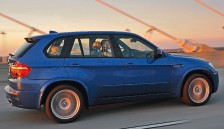Just as the next decade is all set to herald the shift to electricity or hydrogen as the main providers of automotive power, the means by which vehicles respond to drivers’ commands are also poised for the most dramatic overhaul.
Traditional mechanical braking and steering controls will soon be carried out by electronic and digital systems. Already, some cars are able to detect an on-road situation that might pose a threat to safe progress and initiate braking in order to arouse the attention of the driver and help prevent an accident. Others can make steering adjustments.
These substantial safety advances have been made possible by sensors, actuators, servos, electronic controls and software, and as collision avoidance technology becomes more commonplace, more sensors are taking to the highways.
Tasked with monitoring road surface conditions and identifying potential obstacles, the new electronic ‘eyes’ embrace video, radar and photo electrics to capture and transmit information to on-board electronic control units.
Enter FlexRay, the communications protocol for the cars of tomorrow. Aimed at supporting deterministic data transmission rates required by next generation automotive control systems, it is being developed by a consortium set up BMW and Daimler with semiconductor manufacturers Philips and Motorola.
It is in pole position to be the communications backbone of the gadgetry that is expected to replace almost every hydraulic line and mechanical cable with wire-based networks, sensors and actuators.
FlexRay has the potential to be the single protocol for all applications – and if one protocol can be applied across the industry, it holds the promise of reducing the complexity of electronics and communications architectures while also making them more stable.
Significantly, an early member of the consortium was Robert Bosch GmbH, which introduced Controller Area Networks (CAN) in 1985 as traditional wiring looms proved unable to cope with the upsurge in demand for operation of windows, sunroofs, mirrors and door locking.
Research across the industry shows a huge potential for driver assistance systems and BMW wants to make many such features available on more of its future cars.
Each one of these systems adds to the flow of data and they can only work if there is rapid and efficient transfer within the car. Because it operates faster, FlexRay has the ability to handle them and has the capacity to cope with further loading.
Will adopting the system create any safety issues?
Definitely not, said FlexRay project manager Josef
Berwanger. “A luxury car can have up to 70 ECUs and in an accident scenario, the response of so many sensors could result in a data traffic jam. This is avoided by the super highway provided by FlexRay.”
Adds Bosch: ”When implementing safety-related features in future, it will be crucial to be able to precisely predict the time at which a message will be sent and the lag between transmission and arrival.
“X-by-wire functions are an example of this. They work by sensing the position of the brake pedal and steering wheel and electronically transferring the driver’s commands to the corresponding actuators via a bus system.
As a result, these brake the vehicle or turn the front wheels as desired. “We are working to develop FlexRay for such applications because it enables information on particular vehicle conditions to be guaranteed at precisely defined intervals.”
BMW used system in X5
BMW was first to use the new data transmission protocol when FlexRay was incorporated in the X5 SUV launched in 2006. Based on a network of five electric control units, it controls the acclaimed adaptive suspension system.
In the X6, the system that varies damper rates to change the set-up of the car also incorporates integrated chassis management, a dynamic performance control to provide still greater refinement for the driver.
“In future, driving dynamics control systems, driver assistance systems and their innovative interconnection will be ever more important for the differentiation of the BMW badge. We are all set to make greater use of FlexRay,” said FlexRay project
manager Josef Berwanger.
“It could take over steering and braking, but we are not at that stage yet. It could well be that in two or three years from now, we may use it for drive-by-wire functionality and of course, this would be the development that would enable us to use data communication to replace a number of mechanical links.
“For the moment, the main motivation for our use of FlexRay in forthcoming models is the bandwidth we need for integrating the various applications in the chassis domain, including powertrain,” he said.
Please click here to download the Essential Technology Feature.













Login to comment
Comments
No comments have been made yet.